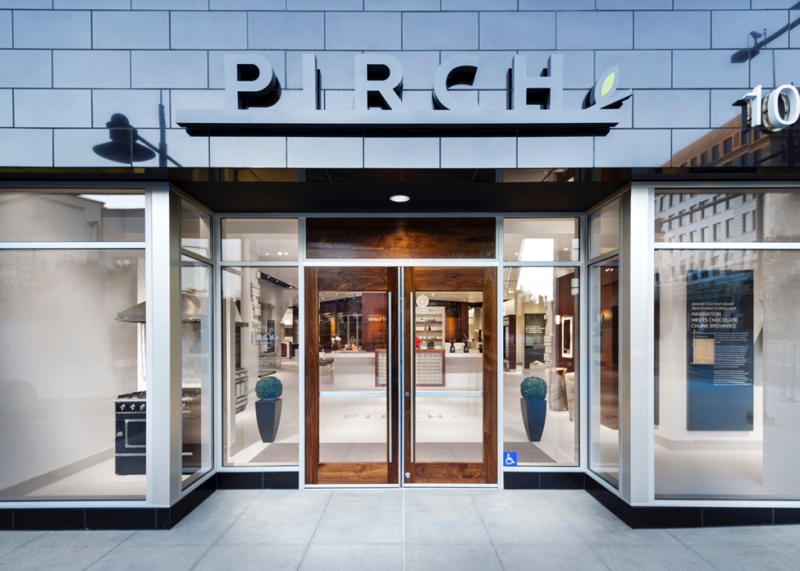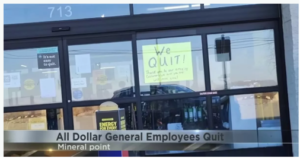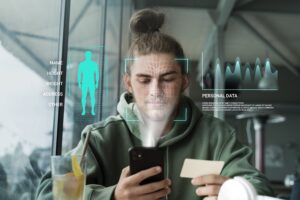In this special article, I interview Jeffery Sears, CEO of PIRCH, to get his insight on customer experience.
I went to visit the new Atlanta PIRCH store in Buckhead, near Lenox Square just a few weeks ago and I was blown away by the experience. With 20 years of customer experience under my belt, it takes a lot to impress me.
PIRCH (www.PIRCH.com) is a five year-old US specialty retailer for kitchen appliances, plumbing fixtures, and outdoor home gear. With sales approaching $100 million and an in-store customer experience that may be one of the best in retail, this fresh and authentic concept encourages its customers—and their designers—to dream. The ‘freedom to dream’ promise isn’t just words, it’s supported by the company’s business design. In this interview with co-founder/CEO Jeffery Sears, you will hear about the front-end retail experience that is reshaping the way fixtures and appliances are sold at retail and get a behind-the-scenes look at how PIRCH keeps its promises so well—and so profitably. This interview has been lightly edited to reduce your reading time.
Mike: We’re talking because of all the places all over the world, I honestly believe that PIRCH has one of the best in-store retail experiences in America right now. Would you please let everyone know a little bit about what PIRCH is and what makes the PIRCH experience so special?
Jeffery: Well, you’re too kind! To let you know from the beginning, it really starts with our people. And, I know a lot of companies talk about their people, but we actually invest a tremendous amount of time and attention into the cultural development as we build a store. We are in the kitchen, bath and outdoor business. That’s WHAT we do, but we spend more time really on WHY we exist and the training process with our people.
Our showrooms are very different, as you noticed. Architecturally, they are stunning and they’re award-winning. But that not what provides direct value to the guests that enter our store. It’s the experience that the stores deliver that allows you to dream about what’s possible—to play and experience the products before you buy them. Next, in a very comfortable atmosphere, you can work on your design with us and choose, then work through the construction process.
Mike: Let’s talk about how PIRCH got its start. I read online that the original idea for PIRCH was born out of frustration. You and your partner, James Stewart, had a hard time getting appliances for your own homes, didn’t you? How did you migrate from just ‘feeling frustrated’ to raising the bar for in-store retail experience in America?
Jeffery: Well, Jim actually was the first on the frustration path. He wanted to outfit his ultimate man cave to host incredible moments with his friends—but more importantly with his family. He experienced an almost commodity-like experience with no one really wanting to explain what’s possible and no one ready to guide him in how he wanted to live outside. The execution of the process, the delivery of the product, and the subsequent problems that occurred afterwards, really showed no ownership from the company he purchased from. That led him into this really quagmire point of frustration.
It was interesting. I had been in the same situation, only with a completely different set of circumstances. This shared experience became our ‘business plan’ for lack of a better word. Yes, it was developed on the back of a napkin.
Our idea was all about how we would want to be treated. You have all of these beautiful products, manufacturers that can deliver these products, both in the decorative plumbing, appliance, and outdoor industries. However, the sophistication of these products didn’t match the delivery in the last three feet to the customer.
Until PIRCH, no one really had completed the process by not only providing a wonderful showroom to be able to work in with intelligent people who cared, but more importantly to have world-class distribution, delivery, installation, and the in-house ability to actually service and do the warranty work on the appliances that we installed.
Our design points were to never leave our customer alone, and to own the relationship. And, we didn’t come from retail, so our view was really about creating a social contract with each guest that walks into our store.
We consider someone taking their time to walk into our building as a privilege. And this thinking was the fodder that led to the brainstorming that eventually led us to our store design partner, Fitch. Shortly afterwards, we (collectively) created the first prototype store in Costa Mesa, California.
Mike: That’s a very engaging story, Jeffery. You said something that really caught my attention because I heard something similar during my store visit. You said something along the lines of, “That’s not the way Jim wanted to live.” When I visited the Atlanta store, they asked me “How would you like to live?” What a brilliant question. How did you authentically get that into the culture?
Jeffery: If you were to visit us at our corporate headquarters, you’d see a total of 60-some people between distribution and the showroom for Paramus, New Jersey, that have been going through seven days of cultural immersion. We spend zero time during this week on operational issues because the operational training is done daily in the home territory—as the store and the distribution center prepare to open. But, the purpose for every employee being at headquarters is to talk about our manifesto, how we carry ourselves, and how we behave.
I know this is going to sound like some multi colored unicorn, so how do these guys make money? The truth of the matter is, we actually teach our people that, their job is to make that moment, when a customer comes into our store, the finest moment in their day. When they walk through the door, you have no idea what’s going on in somebody’s life. They could be suffering a family issue. They could have a loved one that’s been diagnosed with cancer. They could have lost their job. They could have any one of a lot of things going on.
This concept is about believing that selling stuff is not what we do. We happen to be in appliance and decorative plumbing and outdoor, and we happen to install and deliver, and we happen to do warranty work. But, the reason we exist in the store is to create inspired moments in people’s lives.
So, that’s the cultural piece. Let’s put into a real situation.
Suppose you or someone else walked in aid said, “Look, I need a refrigerator.” We might ask “What would you like your refrigerator to do for you?” You’re probably thinking to yourself, “to keep things cold”. At PIRCH, we see it as the beginning of a discussion about how you live, and what you eat, how you shop, and if you use frozen foods? If you don’t, why are we designating this amount of freezer-to-refrigerator space? Why not approach it from a different perspective?
If you want to re-do your kitchen, what do you like to do in your kitchen? If you like to bake, have you ever thought of a baking station? We found these kinds of conversations, on the appliance side of our business, to be non-existent in the country.
On the decorative plumbing side of the business, we found that people were more focused on hygiene rather than private wellness. There are products from phenomenal manufacturers around the world that really offer living-a-better-life benefits (relaxation, comfort, exhilaration) beyond just being clean.
So, if that’s not demonstrated, customers have absolutely no way to understand what’s possible for their homes, their lives, and themselves.
Mike: Let’s talk about demonstration. How do product demonstrations play a role in the customer’s experience?
Jeffery: Well, our, when you walk into the store, the first thing one of our professional baristas from the Bliss Café will say is “Welcome to PIRCH. May I offer you a complimentary beverage?” That might feel surprising because why would someone offer me a beverage? But, it’s a way that we get to slow the customer down, give them a gift, and allow them to wander through the 38 vignettes that are fully outfitted in the showroom.
We have beautiful stories about moments in life and why the various brands can deliver that. All of those vignettes are in demo mode. You can actually work with the product from a functional standpoint, not necessarily cook, but everywhere water does run. Everything is live.
And, then on the cooking side, you end up in Savor, which is a beautiful demonstration kitchen where our chefs are on board all day—cooking and teaching. There are classes every day, which don’t cost our guests anything. And, we have the Patio, which is fully outfitted for the outdoors—also with demonstrations going on. So, whether you’re on the Patio or in Savor working with a chef, you’re actually working with the equipment you can have in your home.
In the Sanctuary downstairs, you can actually see 38 different showerheads and how the water flows out of them. You can even take a shower if you want. We offer complete privacy and you can try before you buy. It’s just a different way to approach an industry that never had, in my mind, that perfect execution in the last three feet with the customer.
Mike: Wonderful. So, so you’re growing and the response must be pretty good from customers. What are some of the things that you hear from them?
Jeffery: You know, I think it’s an appreciation for the experience. And, as you saw, the stores are exquisite. I think the hardest thing that we have to get across is the fact that our prices are the same as anyone else’s. The inspiration that you’re sensing is free. That’s because of the partnerships between our suppliers and the world-class developers that have invited us into the luxury centers that we occupy.
So, whether it’s NorthPark Center in Dallas, Oakbrook Center in Chicago, the South Coast Collection in Costa Mesa, the Glendale Galleria, the Garden State Plaza in Paramus, Rancho Mirage or San Diego in California, you can expect a combination of quality, story, and experience, that allows the customer to come in and have a different experience. And, then to equally be impressed when we show up at your home with our own employees and we take care of the product.
Mike: So, Jeffery, high quality is a good value for everyone, from real estate all the way down to the customer?
Jeffery: Yeah, and I think if you pay attention today, and I know that your audience understands this, we don’t pay a lot of attention to demographics from the classical sense because it was created by the advertising industries to sell you more ads.
But, we do pay attention to the difference between the younger generation of buyers and traditional buyers. We believe that they’re customers that actually do want to make a social contract with a store and the people in it, and that they do want to have a relationship, and that they do attach to brand, and they do appreciate value, not just the low price.
That’s how I buy. If you walk into Whole Foods and you’re a customer of Whole Foods, you have a tendency to trust everything that is in Whole Foods, right? And, really that’s what we’re trying to do. We’re saying “Look, we’ve vetted these products and these manufacturers. We believe in them, and we’ve presented them to you in a way that is elegant and comfortable.” When that happens, the customer feels the value.
Quite frankly, you know, I’m not one to believe that brick and mortar is dead and the internet is taking over the world because I believe there are things that you purchase that are fundamentally a fulfillment exercise in your life. And, I believe that human beings still have a need to gather and to be with other human beings, and to learn, and to be inspired.
That’s really the responsibility of retail in all areas across the world. If you’re not doing that, then you owe the customer an apology—and they might as well buy on the Internet.
You don’t go to the Internet to be inspired, you go there to transact when you’re purchasing.
Mike: Well put. I heard from one of your team, that while technology doesn’t play a big part in the store right now, you’re getting ready for a digital makeover. Can you talk a little bit about that?
Jeffery: Sure. The one thing we’ve learned about the stores—and I don’t know why it took us so long to learn this—Is that you can’t digitize the store. So, you’ve been in Atlanta, can you imagine us trying to give you that same feeling that you felt through a website? The same awestruck feeling, the touch of running water, the beautiful displays?
Mike: No, I can’t. It just doesn’t translate. The scale, the sound—or the lack of it—the attractiveness of the appliances and fixtures, and just the magnetism that some of the different displays have, that wouldn’t come across as well if it were all digital.
Jeffery: Right.
Mike: Or the friendliness.
Jeffery: Right. So, the learnings from that is that our digital strategy has to be all encompassing. It has to let you carry the same feeling (even if slightly reduced in intensity) from channel to channel—from social media to web, to in-store, and, importantly to the at-home installation experience.
Mike: The team member who was with me during my Atlanta store visit told me that for every item in the store, there are nine more SKU’s available. Does that mean that you might be doing something with Tablets or hand-held devices to offer an endless aisle, or to help people visualize what’s not in the store?
Jeffery: Yes, so one of the things that’s somewhat complicated about private wellness is the amount of options within a product category. We have created a beautiful and functional operating system from the ground up called PIRCH Advisor. It basically allows you to very, very quickly collate and curate a project by room, associated with your plans or your finish schedule, label things however you want—In whatever depth of detail—including installation, guidelines, etc. It starts at a point-and-touch station, then is broadcasted in one of our Dream Rooms onto a 50-inch screen for review and collaboration.
So, you can work comfortably in a Dream Room, then move out into the showroom to experience various products, and come back to the Dream Room to make decisions. By the time you’re done, you’ve collated and curated what would be a proposal, and instead of taking days to put together the information that you’ve discussed, it’s done on the spot. With the click of a button it’s, you know, it’s in your email in a way that can be shared at home and thought about that evening.
Mike: Very cool. Can you tell me, on a personal note, what your favorite high points are in the PIRCH experience?
Jeffery: That’s really hard, Mike, because they are jewel boxes when you’re in them, but (laughing) if you had to think about the hero items in the store and the things that are the most important to the customer, I think, we have an extraordinary team, a barista team, and an event team—because we have so many events in our store.
You’re greeted with the care by that team at Bliss Café. You’re offered a complimentary beverage. The guides explain to you how the store works. There are just so many ways you can enjoy it.
Another important idea is that the customer chooses how they want to navigate the store. It’s an incredibly beautiful and important place. I think the Patio, Savor, the demonstration kitchens, indoor and out, and the Sanctuary are wonderful expression of dreaming what’s popular on television right now—reality shows. But here, the audience can get involved and not just watch! Whether you’re working with a phenomenal chef, enjoying a gift of a drink or being offered food, you’re participating, not spectating. And, you know, the Sanctuary, which is really kind of a store within a store, where you, you move into a very spa-like atmosphere, and it’s very calming, and it allows you to think. So, I don’t necessarily have a favorite, and I have a lot of respect for those main hero items in the store.
Mike: Terrific. Well, we’re cooking up an experience at PIRCH here in Atlanta on August 13, from 8:30-11:00 in the morning. The Customer Experience Professionals Association and the Retail Design Institute will be in the store for a, a tour and a lecture, some really good food in late August and I hope that you’ll be able to join us.
Jeffery: I’m actually scheduled for that, and looking forward to a great event!
Mike: Terrific. It’s wonderful for you to spend time with us, Jeffery. I thank you so much. And, I believe this kind of exchange is a two-way street. Is there anything on your mind that I, or either one of these groups might answer for you? Right now or even after the interview, I’d be happy to do some payback.
Jeffery: Well, here’s what I would ask. You may have noticed signs that reflect the stores’ irreverent sense of humor. On some of the presentation boards in the stores, it says, “Look, we, in the interest of transparency, we know sometimes we’ll make a mistake, but if we do, we will own it. Uh, and we will work tirelessly to correct what’s wrong. We’re so confident of that, here’s our CEO’s phone number”, which is listed.
And, then jokingly they say, “Just don’t tell him we gave it to you.” So, what I would ask you or anyone who goes to the stores, if you see anything that could help us improve, simply give me a call at 858-966-3601. That’s my direct line and I’d love to hear from you.
Mike: What a wonderful ending. I can’t think of a better evidence of a promise well kept. So, Jeffery Sears, CEO of PIRCH, thank you so much for being with us today. Congratulations on a wonderful, new concept, and we wish you the best of luck in the years to come.






